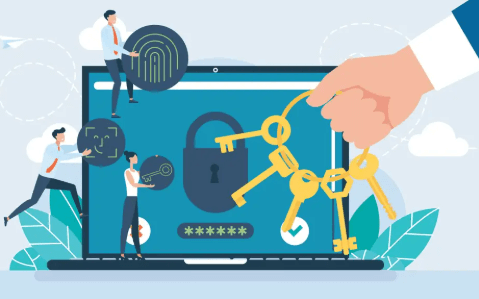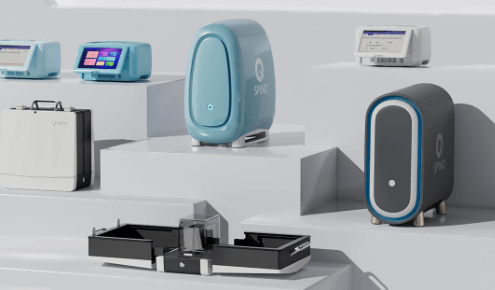Choosing the Right Data Privacy Compliance Software
Introduction
In a digital-first world, personal data is the currency businesses trade in—and privacy laws are the strict regulations governing that exchange. As regulations like GDPR, CCPA/CPRA, LGPD, and others multiply globally, organizations must move beyond ad hoc measures and adopt data privacy compliance software to ensure consistent, scalable, and auditable practices. Choosing the right solution is no longer optional; it’s essential for building trust, avoiding fines, and maintaining competitive advantage.
In this article, you’ll find a comprehensive, user-friendly guide (grounded in EEAT — expertise, experience, authoritativeness, and trust) on what to look for, how to evaluate, and how to implement data privacy compliance software. I also include LSI keywords like “privacy management platform,” “consent management,” “data protection tools,” “compliance automation,” and “vendor risk management” to give a full picture. Finally, I address five frequently asked questions people search when considering these tools.
Why You Need Data Privacy Compliance Software
1. The complexity of privacy regulations
Global privacy laws differ in nuance and enforcement. For example, GDPR’s strict consent requirements, record-keeping obligations, and cross-border data transfer rules are far more demanding than many older statutes. Meanwhile, U.S. states are rolling out their own privacy laws, making the landscape fragmented. A manual approach simply cannot keep up.
2. Risk mitigation and liability protection
Noncompliance can lead to hefty fines, class-action lawsuits, regulatory investigations, and reputational harm. A robust privacy compliance tool helps you document audits, respond to data subject access requests (DSARs), manage vendor risk, and demonstrate accountability.
3. Automation and operational efficiency
Instead of manual spreadsheets and fragmented systems, a dedicated platform can automate tasks such as consent collection, breach notification workflows, impact assessments, regulatory updates, and reporting. This compliance automation reduces error, saves time, and frees privacy teams to focus on strategy.
4. Building user trust and competitive advantage
Consumers increasingly care about how their data is used. According to studies, many will stop doing business with brands that mishandle personal data. A transparent privacy program backed by software sends a signal of accountability and strengthens brand credibility.
Key Features to Look for in Data Privacy Compliance Software
To choose wisely, look for these must-have features (and additional differentiators) in a privacy management platform or data protection tool:
| Feature | Why It Matters | What to Look For |
|---|---|---|
| Consent management & tracking | You must capture, record, and enforce valid user consents under laws like GDPR/CCPA. | Granular opt-ins, geolocation-based banner variation, consent expiry, audit trails. |
| DSAR / request management | Individuals have rights to access, delete, or port their data. | Workflow automation, identity verification, response time tracking. |
| Data discovery, mapping, and classification | You need visibility into what data you hold, where, and who can access it. | Scans across databases, cloud, files; classification tags; data lineage. |
| Privacy impact assessments (PIA / DPIA) | New or high-risk processing must be assessed for privacy risk. | Built-in templates, guided workflows, risk scoring. |
| Third-party / vendor risk management | Your vendors are part of your compliance perimeter. | Vendor assessments, compliance scoring, contractual templates. |
| Audit and reporting | Demonstrate compliance in audits and internal reviews. | Dashboards, regulatory reporting, exportable logs. |
| Regulation updates & templates | Laws change, and you need evolving coverage. | Automatic updating, legal content, jurisdiction templates. |
| Integration & APIs | It should not live in a silo. | Connectors to CRM, marketing, databases, cloud services. |
| User-friendly UI and support | If your privacy team struggles with the tool, adoption fails. | Intuitive UX, tutorials, responsive support. |
Some tools also offer guarantees (e.g., “no fines, no penalties”) to demonstrate confidence in their compliance coverage — for example, Osano offers such a guarantee.
Popular Tools & Platforms (and What They Excel At)
Here’s a quick look at well-regarded privacy tools and what makes them stand out:
- OneTrust — A mature, full-featured platform focused on privacy automation, governance, and compliance workflows.
- Ketch — Known for intuitive workflows and flexible consent automation across regions.
- TrustArc — Offers a broad suite of compliance tools, bridging privacy with data governance.
- DataGrail — Focuses on privacy operations and scaling DSAR fulfillment for enterprise clients.
- Collibra Data Privacy — Good for integrating with data governance and lineage in large organizations.
- PKWare — Strong at data discovery, encryption, masking, and compliance-centric features.
- Lepide DSP — Offers auditing, data visibility, and internal compliance in hybrid environments.
While these platforms vary in price, scope, and sophistication, they all cover the foundational domains of data privacy compliance.
How to Evaluate & Choose the Right Software
Here’s a step-by-step approach that emphasizes EEAT (showing you know what you’re doing) and is truly user-friendly:
1. Define your compliance requirements first
Map out which privacy laws your organization must comply with (e.g. GDPR, CCPA, LGPD, local ones). Document your data flows, types of personal data processed, and key risk areas.
2. Shortlist based on core features
Use the feature table above to screen toolsets. Exclude those lacking critical functionality like DSAR automation, vendor risk, or regulatory updates.
3. Assess usability and ease of onboarding
A tool may be powerful, but if it’s too complex, adoption fails. Ask for a trial or sandbox environment. Test for intuitive dashboards, guided wizards, and self-service features.
4. Check integration capabilities
Your privacy tool should integrate with existing systems like CRM, marketing platforms, databases, cloud services, identity management, and analytics systems.
5. Vendor reputation, support, and trustworthiness
Look for independent reviews, case studies, security accreditations, third-party audits, and customer support responsiveness.
6. Demonstrations and proof of concept
Run a proof of concept using a subset of your real data. Evaluate performance, accuracy of data scans, response times, and error rates.
7. Scalability & pricing model
Ensure the tool can scale with your organization. Review pricing models carefully (per user, per data record, modules extra, etc.).
8. Contract terms and guarantees
Review SLAs, refund policies, data residency options, and any guarantees (e.g. “no fines” promise). Also check how they handle data breaches or liability.
9. Implementation plan
Plan for phased deployment: start with high-risk data flows (e.g. customer, marketing, vendor) and expand. Include training, change management, testing, and audits.
Best Practices & Guidelines for Implementation
- Privacy by design / default: Implement privacy controls from day one in new systems and services.
- Minimization and purpose limitation: Only collect data you absolutely need and only use it for declared purposes.
- Dynamic consent models: Allow users to revoke or modify their choices over time.
- Regular audits and monitoring: Continuously scan for new data that appears, shadow systems, or policy drift.
- Incident response & breach workflows: Predefine steps to detect, contain, notify regulators/consumers, and remediate.
- Vendor assessments and DPIAs: For each new vendor or high-risk processing activity, conduct a privacy impact assessment.
- Training and awareness: Equip employees across functions with knowledge of privacy policies, obligations, and safe data handling.
- Versioning and documentation: Maintain versioned records of policies, processing logs, consent history, and audit trails.
Frequently Asked Questions (from “People Also Ask”)
- What is data privacy compliance software used for?
Privacy compliance software helps organizations operationalize and automate privacy tasks such as consent management, data subject requests (DSARs), risk assessments, vendor oversight, auditing, and regulatory reporting. - How much does privacy compliance software cost?
Costs vary widely depending on scale, features, number of users or records, modules included, and support level. Some start with modest subscription pricing; enterprise solutions may run into six or seven figures annually. - Can privacy software guarantee full compliance?
No software can guarantee compliance 100% because regulations evolve and human error or edge cases exist. However, many platforms offer strong coverage, automatic updates, audit trails, and sometimes liability protections or “no fines” guarantees. - How long does it take to implement?
Implementation time can range from a few weeks for a basic deployment to several months for full-scale integration, data mapping, vendor onboarding, and training. - Is it necessary for small businesses?
Yes — even small businesses that collect or process personal data may be subject to privacy laws. A lightweight or modular privacy tool can help small firms stay compliant, avoid fines, and build trust from the start.
Conclusion
Data privacy isn’t just a legal obligation—it’s a business imperative. In a time of data breaches, consumer skepticism, and expanding regulation, relying on spreadsheets and manual processes won’t cut it. Adopting robust data privacy compliance software (sometimes called a privacy management platform or privacy operations tool) allows organizations to scale their privacy program, document accountability, and build trust with customers.
The right software bridges the gap between law and operations. It automates consent flows, handles DSARs, maps data, assesses vendor risk, updates legal templates, and gives you auditable dashboards. But choosing the best tool requires methodical evaluation: define your needs, test usability, check integrations, evaluate reputation, and run proof-of-concept trials.
Above all, implementation must be complemented by a privacy-aware culture: employee training, iterative audits, and strong governance. Done right, you won’t just avoid fines—you’ll set your organization apart as one that respects user rights and leads on privacy.







